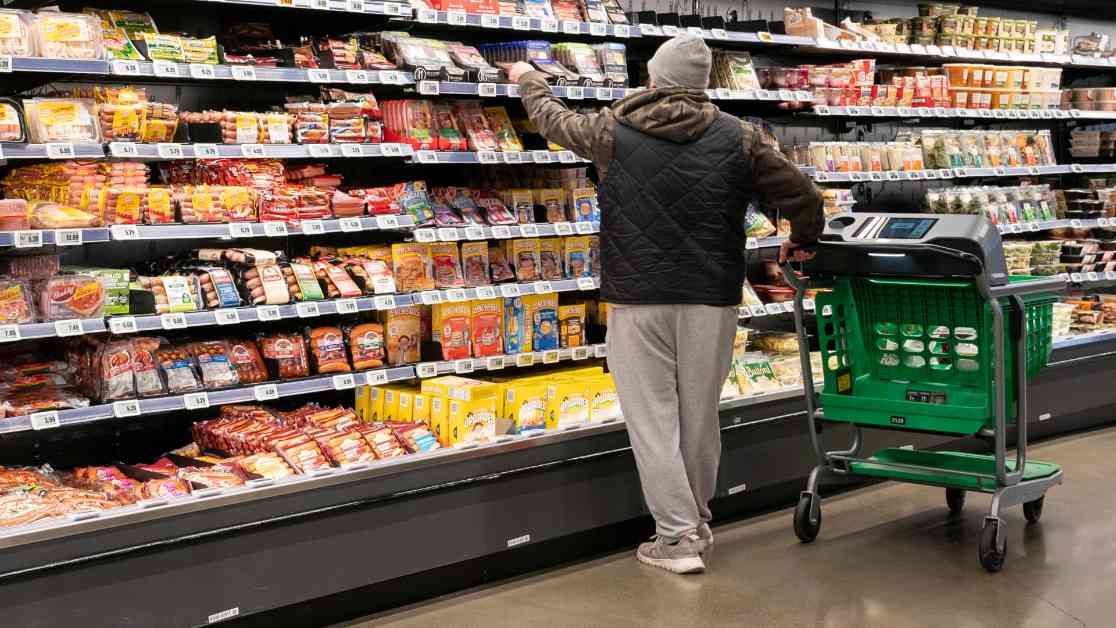In January, consumer prices surged by 0.5%, surpassing expectations and intensifying pressure on the Federal Reserve to maintain interest rates. The Bureau of Labor Statistics revealed that the consumer price index, a key indicator of expenses for goods and services across the U.S. economy, rose by 0.5% on a seasonally adjusted basis for the month, leading to an annual inflation rate of 3%. These figures exceeded the Dow Jones estimates of 0.3% and 2.9%, respectively, marking a significant uptick from December.
Market Reaction and Expert Analysis
Following this announcement, markets faced a downturn, with Dow Jones Industrial Average futures plummeting over 400 points and bond yields surging. Investment strategy analyst at ClearBridge Investments, Josh Jamner, emphasized the impact of the January CPI report on the Federal Reserve’s decision-making. He noted, “The ‘wait and see’ Fed is going to be waiting longer than anticipated after a red-hot January CPI inflation report,” suggesting that the era of rate cuts may be coming to an end.
Federal Reserve Chair Jerome Powell offered a cautious perspective on the CPI report during his testimony before the House Financial Services Committee. He highlighted the Fed’s reliance on the Commerce Department’s personal consumption expenditures prices gauge for a more comprehensive understanding of economic trends. Powell’s remarks underscored the importance of balanced interpretation in a volatile market environment.
Key Inflation Drivers and Economic Implications
Shelter costs emerged as a significant factor contributing to inflation, rising by 0.4% in January and accounting for approximately 30% of the overall increase. Erik Norland, chief economist at CME Group, pointed out that higher mortgage rates were pushing more Americans into the rental market, where vacancy rates are at historic lows. This trend underscores the broader impact of housing dynamics on inflationary pressures.
Food prices experienced a notable spike, particularly driven by a 15.2% surge in egg prices due to ongoing challenges with avian bird flu. The Bureau of Labor Statistics highlighted this as the most substantial increase in egg prices since June 2015, with eggs contributing significantly to the rise in food-at-home prices. Nonalcoholic beverages and fresh vegetable prices exhibited contrasting trends, showcasing the diverse dynamics within the food sector.
In the automotive industry, new vehicle prices remained stable, while used cars and trucks saw a 2.2% increase. Motor vehicle insurance costs also rose by 2%, contributing to an annual gain of 11.8%. Energy prices, including gasoline, climbed by 1.1%, reflecting broader economic shifts impacting consumer spending patterns.
The CPI release coincided with President Donald Trump’s advocacy for lower interest rates, aligning with his tariff policies. However, the report’s implications on monetary policy may complicate efforts to ease financial conditions. As prices outpace wage growth, workers face a diminished purchasing power, highlighting the intricate balance between inflation management and economic stability.
In conclusion, the January CPI data offer a nuanced perspective on the evolving economic landscape, shaping market expectations and policy decisions. The interplay between inflation drivers, consumer behaviors, and governmental responses underscores the complexity of managing economic uncertainties in a dynamic environment. As stakeholders navigate these challenges, a holistic understanding of inflation dynamics and their broader implications is essential for informed decision-making and sustainable growth.














